CR2025 Battery: Features, Pinout, and Datasheet
CR STANDARD
Hello, everyone! A CR2025 battery is a non-rechargeable (primary) lithium coin or “button” cell that is 20mm diameter x 2.5mm thickness. This article mainly introduces features, pinout, datasheet and other detailed information about Murata Manufacturing CR2025.

9 Best CR2025 Batteries 2018
CR2025 Description
The CR2025 battery is a non-rechargeable (primary) lithium coin or “button” cell that is 20mm diameter x 2.5mm thickness. The CR2025 battery has a high voltage of 3V, a capacity of up to 170mAh, depending on manufacturer specifications.
The CR2025 battery is an extremely common lithium coin cell battery and is used in similar amounts and in similar applications as the CR2032. The CR2025 is slightly better suited for use in products that have less available mounting space than those that would use a CR2032.
On the other hand, the lower capacity (mAh) of the CR2025 will give a slightly shorter service life than a CR2032 when used in similar applications.
CR2025 Pinout

Pinout
CR2025 CAD Model

Symbol

Footprint

3D Model
CR2025 Features
• Lightweight, High Voltage And High Energy Density
The battery voltage is 3V, almost double that of normal alkaline or manganese batteries. This means that the number of batteries required for equipment can be halved for maximum space-saving and weight reduction.
• Excellent Discharge Characteristics
Voltage characteristics remain stable even for a long period of discharge, greatly improving the reliability of equipment that uses the battery. Such equipment is also maintenance-free (battery replacement is seldom required).
• Excellent Leakage Resistance
The newly developed battery construction and electrolyte ensure maximum leakage resistance over a long span of time.
• Excellent Long-Term Reliability
Carefully selected active materials are used for the active material as well as for the electrolyte. These materials are sealed by Murata's innovative technology to minimize battery self-discharge. The annual self-discharge rate at room temperature and normal humidity is less than 1% of the nominal capacity.
• UL Approved Parts
Murata's Coin Manganese Dioxide Lithium Batteries are approved by UL. (UL1642 File No. MH12566)
• RoHS Directive / European Directives
This product does not contain Mercury(Hg), Cadmium(Cd), nor Lead(Pb), and conforms to EC regulation values. (Directive 2006/66/EC, 2013/56/EU)
The Battery pack is excluded from RoHS directive (DIRECTIVE 2011/65/EU OF THE EUROPEAN PARLIAMENT AND OF THE COUNCIL of 8 June 2011 on the restriction of the use of certain hazardous substances in electrical and electronic equipment).
Specifications
- TypeParameter
- Factory Lead Time15 Weeks
- Voltage Rated
RATED voltage is the voltage on the nameplate - the "design point" for maximum power throughput and safe thermal operation.
3V - Size / Dimension
In electronic components, the parameter "Size / Dimension" refers to the physical dimensions of the component, such as its length, width, and height. These dimensions are crucial for determining how the component will fit into a circuit or system, as well as for ensuring compatibility with other components and the overall design requirements. The size of a component can also impact its performance characteristics, thermal properties, and overall functionality within a given application. Engineers and designers must carefully consider the size and dimensions of electronic components to ensure proper integration and functionality within their designs.
0.79Dia x 0.10 H 20.0mmx2.5mm - Part Status
Parts can have many statuses as they progress through the configuration, analysis, review, and approval stages.
Active - Moisture Sensitivity Level (MSL)
Moisture Sensitivity Level (MSL) is a standardized rating that indicates the susceptibility of electronic components, particularly semiconductors, to moisture-induced damage during storage and the soldering process, defining the allowable exposure time to ambient conditions before they require special handling or baking to prevent failures
Not Applicable - Reach Compliance Code
Reach Compliance Code refers to a designation indicating that electronic components meet the requirements set by the Registration, Evaluation, Authorization, and Restriction of Chemicals (REACH) regulation in the European Union. It signifies that the manufacturer has assessed and managed the chemical substances within the components to ensure safety and environmental protection. This code is vital for compliance with regulations aimed at minimizing risks associated with hazardous substances in electronic products.
compliant - Termination Style
"Termination style" in electronic components refers to the method used to connect the component to a circuit board or other electronic devices. It determines how the component's leads or terminals are designed for soldering or mounting onto the circuit board. Common termination styles include through-hole, surface mount, and wire lead terminations.Through-hole components have leads that are inserted through holes in the circuit board and soldered on the other side. Surface mount components have flat terminals that are soldered directly onto the surface of the circuit board. Wire lead terminations involve attaching wires to the component for connection.The choice of termination style depends on factors such as the type of component, the manufacturing process, and the space available on the circuit board. Different termination styles offer various advantages in terms of ease of assembly, reliability, and space efficiency in electronic designs.
Requires Holder - Storage/Refrigeration Temperature
The parameter "Storage/Refrigeration Temperature" in electronic components refers to the recommended temperature range at which the components should be stored to maintain their integrity and functionality. This parameter indicates the temperature limits within which the components can be safely stored without risking damage or degradation. Storage temperature is crucial for preserving the performance and reliability of electronic components over time, especially for sensitive components such as integrated circuits and semiconductors. Refrigeration temperature may be specified for certain components that require lower temperatures to prevent degradation or prolong shelf life. It is important to adhere to the recommended storage/refrigeration temperature guidelines to ensure the longevity and proper functioning of electronic components.
50°F~77°F 10°C~25°C - Battery Chemistry
A battery is a device that stores chemical energy, and converts it to electricity. This is known as electrochemistry and the system that underpins a battery is called an electrochemical cell. A battery can be made up of one or several (like in Volta's original pile) electrochemical cells.
Lithium Manganese Dioxide - Battery Cell Size
The most common lithium-ion cell is the 18650 (the numbers define the physical dimensions and shape as follows: 18mm in diameter, 65mm long and the 0 means it has a round cross-section) which is due to its widespread use in laptop battery packs.
Coin 20.0mm - Capacity
In electronic components, "Capacity" typically refers to the maximum amount of electrical charge that a component can store. It is measured in units called farads (F). Capacitors are the most common components that have a capacity rating. The capacity of a capacitor determines how much energy it can store and release when connected in a circuit. Higher capacity capacitors can store more charge and are often used in applications requiring larger energy storage or filtering capabilities. It is important to select a capacitor with the appropriate capacity to ensure proper functioning of the circuit.
160mAh - Discharge Rate
The "Discharge Rate" in electronic components refers to the rate at which a component can release stored energy or power. This parameter is particularly important in devices that use batteries or capacitors, as it determines how quickly these components can discharge their stored energy. A high discharge rate means that the component can release energy quickly, while a low discharge rate indicates a slower release of energy. Understanding the discharge rate of electronic components is crucial for designing circuits and systems that require specific power delivery characteristics.
200μA - Battery Type
Battery type refers to the specific chemistry and design of a battery that determines its characteristics, performance, and applications. Common battery types include alkaline, lithium-ion, nickel-metal hydride, and lead-acid, each with unique properties such as voltage, capacity, energy density, and discharge rates. The choice of battery type affects factors such as longevity, rechargeability, and suitability for various electronic devices and systems. Understanding battery type is crucial for selecting the appropriate power source for specific electronic components and applications.
PRIMARY - RoHS Status
RoHS means “Restriction of Certain Hazardous Substances” in the “Hazardous Substances Directive” in electrical and electronic equipment.
Non-RoHS Compliant
CR2025 Equivalent
CR2025 VS CR2032
1. The similarities between CR2032 and CR2025 batteries
The CR2025 and CR2032 are both 3-volt lithium coin or button cells that measure 20mm in diameter. In terms of technology, both CR2025 and CR2032 batteries have the same voltage, chemistry, and diameter. Both batteries can power small devices like calculators, computer motherboards, fitness appliances, laser pens, POS systems, security devices, sensors, smart carport keyless entry devices, wristwatches, and various medical devices such as clinical thermometers, glucose monitors, heart pacemakers, and tensiometers. Both the CR2025 and CR2032 batteries from the same manufacturer will have the same shelf-life if stored in similar conditions.
Most major battery brands like Duracell, Energizer, Panasonic, Philips, Maxell, Murata (formerly Sony), Renata, and others carry both the CR2025 and CR2032 batteries in their product catalogs as they are two of the most widely used batteries worldwide.
2. The difference between CR2032 and CR2025 batteries
The obvious difference between the two battery types would be thickness. The CR2032 is 3.2mm thick while the CR2025 is 2.5mm thick. Because the CR2032 is 0.7mm thicker than the CR2025, it has a higher capacity (mAh) to deliver current to the load. A standard CR2032 can nominally deliver 225mAh while the average CR2025 can nominally only deliver 160mAh. Due to the smaller capacity, the thinner battery may not last as long and may need to be replaced sooner.
CR2025 Applications
● Automotive: Smart Key, Keyless Entry, Door Sill Strip
● IoT: Tracking Devices, Sensors, Security
● Medical: Thermometers
● Others: Home Electrical Appliances, Multifunctional Printer, Electronic Price Tags, POS Systems
● Computer Motherboards, Car Key Fobs, Watches, Calculators, PDAs, Electronic Organizers, Garage Door Openers, Toys, Games, Door Chimes, Pet Collars, LED Lights, Sporting Goods, Pedometers, Calorie Counters, Stopwatches And Medical Devices.
CR2025 Manufacturer
The basic idea of Murata Manufacturing Co., Ltd. has remained unchanged since the founding of the company, always returning the required functions to the materials and considering the problem from this starting point.
Through the implementation of this concept, Murata Manufacturing Co., Ltd. has been successfully developing numerous electronic components. Personal computers, mobile phones, automobiles, home appliances... The electronic machines that support our daily lives are undergoing rapid changes.
Supporting this change are the electronic components of Murata Manufacturing Co., Ltd., which continuously reform itself in the machine and on its circuit board. In order to realize a rich society, Murata Manufacturing Co., Ltd. continues to provide new technologies and products.
Datasheet PDF
- Datasheets :
- Environmental Information :
1.What's the difference between CR2032 and CR2025 batteries?
The obvious difference between the two battery types would be thickness. The CR2032 is 3.2mm thick while the CR2025 is 2.5mm thick. Because the CR2032 is 0.7mm thicker than the CR2025, it has a higher capacity (mAh) to deliver current to the load.
2.How long will a CR2025 battery last?
The 3 Volt CR2025 coin cell battery lasts about 4 to 6 months with normal use.
3.Are CR2025 and 2025 the same?
Due to its very long shelf life and stable voltage, CR2025 is often used as a memory battery in computers, cameras, and other electronic devices. ... CR2025 battery is 20 mm in diameter and 2.5 mm in height, thus the '2025' part of the name.
 STM32F446RET6 Microcontroller: 180MHz,64-LQFP, Pinout and Features
STM32F446RET6 Microcontroller: 180MHz,64-LQFP, Pinout and Features10 February 20225059
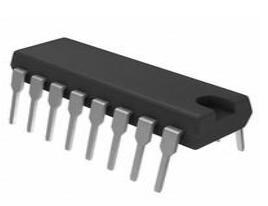 MCP3008 IC: Datasheet, Pinout, Specifications
MCP3008 IC: Datasheet, Pinout, Specifications27 August 20217476
 N76E003AT20 Microcontroller: Pinout, Datasheet and Programming
N76E003AT20 Microcontroller: Pinout, Datasheet and Programming27 October 202110630
![Where & How to Use PNP Transistor 2N3906? [Video]](https://res.utmel.com/Images/Article/6931b63f-f957-44e2-b8af-58ec5bc5ad8e.png) Where & How to Use PNP Transistor 2N3906? [Video]
Where & How to Use PNP Transistor 2N3906? [Video]27 April 20225647
 1N5402 Rectifier: Features, Pinout, and Datasheet
1N5402 Rectifier: Features, Pinout, and Datasheet08 December 20211557
![How to use TMC2130 Motor Driver IC? [FAQ]](https://res.utmel.com/Images/Article/38cad43a-2bc8-484d-bd1a-a156efda70fb.png) How to use TMC2130 Motor Driver IC? [FAQ]
How to use TMC2130 Motor Driver IC? [FAQ]05 May 20222100
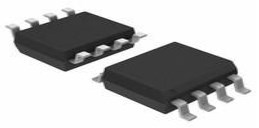 MIC2951 Low-Dropout Voltage Regulator: Pinout, Equivalent and Datasheet
MIC2951 Low-Dropout Voltage Regulator: Pinout, Equivalent and Datasheet09 March 20222876
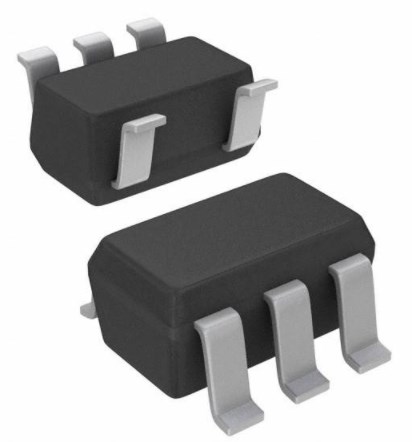 TPS72325DBVR: Regulator, Pinout, Equivalent, Circuit
TPS72325DBVR: Regulator, Pinout, Equivalent, Circuit25 March 2022635
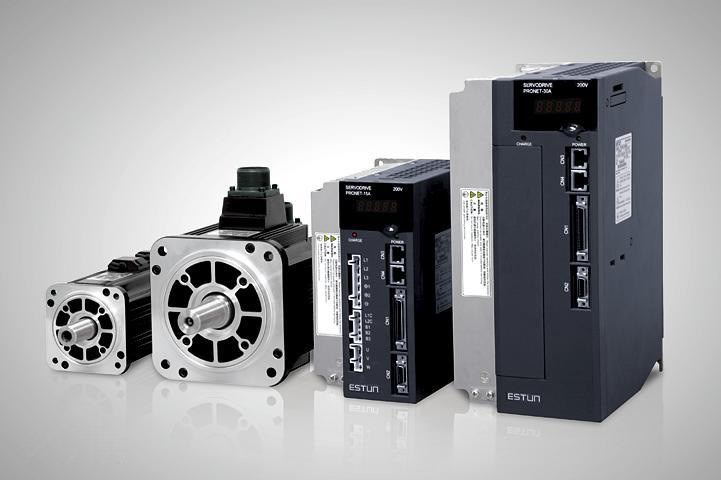 What is a Servo Motor?
What is a Servo Motor?09 March 20214555
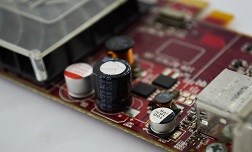 Battery Management System (BMS) Implementation Form and Chip Performance Analysis
Battery Management System (BMS) Implementation Form and Chip Performance Analysis28 April 20223260
 Is there a Limit to the Chip Process Node?
Is there a Limit to the Chip Process Node?02 November 202117345
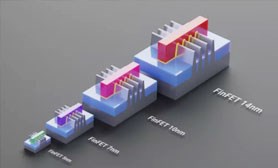 What is MCU Decryption?
What is MCU Decryption?17 January 20221540
 What is Amplifier?
What is Amplifier?08 November 20255590
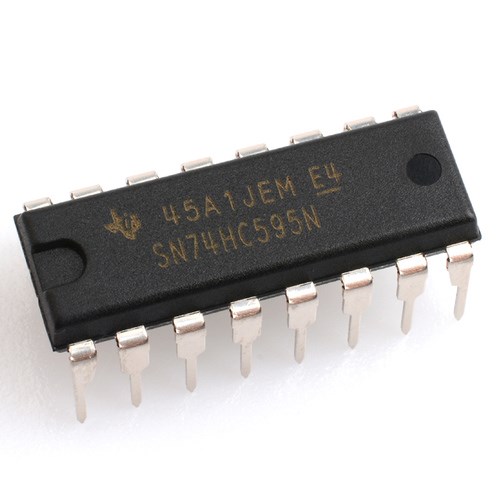 Shift Register: Classification and Working Principle
Shift Register: Classification and Working Principle26 December 202010037
 Automotive Chips Rose Across the Board!
Automotive Chips Rose Across the Board!11 March 20222016
 Samsung: 3nm Yield Rate of 20%
Samsung: 3nm Yield Rate of 20%19 April 20222955
Murata Electronics
In Stock
United States
China
Canada
Japan
Russia
Germany
United Kingdom
Singapore
Italy
Hong Kong(China)
Taiwan(China)
France
Korea
Mexico
Netherlands
Malaysia
Austria
Spain
Switzerland
Poland
Thailand
Vietnam
India
United Arab Emirates
Afghanistan
Åland Islands
Albania
Algeria
American Samoa
Andorra
Angola
Anguilla
Antigua & Barbuda
Argentina
Armenia
Aruba
Australia
Azerbaijan
Bahamas
Bahrain
Bangladesh
Barbados
Belarus
Belgium
Belize
Benin
Bermuda
Bhutan
Bolivia
Bonaire, Sint Eustatius and Saba
Bosnia & Herzegovina
Botswana
Brazil
British Indian Ocean Territory
British Virgin Islands
Brunei
Bulgaria
Burkina Faso
Burundi
Cabo Verde
Cambodia
Cameroon
Cayman Islands
Central African Republic
Chad
Chile
Christmas Island
Cocos (Keeling) Islands
Colombia
Comoros
Congo
Congo (DRC)
Cook Islands
Costa Rica
Côte d’Ivoire
Croatia
Cuba
Curaçao
Cyprus
Czechia
Denmark
Djibouti
Dominica
Dominican Republic
Ecuador
Egypt
El Salvador
Equatorial Guinea
Eritrea
Estonia
Eswatini
Ethiopia
Falkland Islands
Faroe Islands
Fiji
Finland
French Guiana
French Polynesia
Gabon
Gambia
Georgia
Ghana
Gibraltar
Greece
Greenland
Grenada
Guadeloupe
Guam
Guatemala
Guernsey
Guinea
Guinea-Bissau
Guyana
Haiti
Honduras
Hungary
Iceland
Indonesia
Iran
Iraq
Ireland
Isle of Man
Israel
Jamaica
Jersey
Jordan
Kazakhstan
Kenya
Kiribati
Kosovo
Kuwait
Kyrgyzstan
Laos
Latvia
Lebanon
Lesotho
Liberia
Libya
Liechtenstein
Lithuania
Luxembourg
Macao(China)
Madagascar
Malawi
Maldives
Mali
Malta
Marshall Islands
Martinique
Mauritania
Mauritius
Mayotte
Micronesia
Moldova
Monaco
Mongolia
Montenegro
Montserrat
Morocco
Mozambique
Myanmar
Namibia
Nauru
Nepal
New Caledonia
New Zealand
Nicaragua
Niger
Nigeria
Niue
Norfolk Island
North Korea
North Macedonia
Northern Mariana Islands
Norway
Oman
Pakistan
Palau
Palestinian Authority
Panama
Papua New Guinea
Paraguay
Peru
Philippines
Pitcairn Islands
Portugal
Puerto Rico
Qatar
Réunion
Romania
Rwanda
Samoa
San Marino
São Tomé & Príncipe
Saudi Arabia
Senegal
Serbia
Seychelles
Sierra Leone
Sint Maarten
Slovakia
Slovenia
Solomon Islands
Somalia
South Africa
South Sudan
Sri Lanka
St Helena, Ascension, Tristan da Cunha
St. Barthélemy
St. Kitts & Nevis
St. Lucia
St. Martin
St. Pierre & Miquelon
St. Vincent & Grenadines
Sudan
Suriname
Svalbard & Jan Mayen
Sweden
Syria
Tajikistan
Tanzania
Timor-Leste
Togo
Tokelau
Tonga
Trinidad & Tobago
Tunisia
Turkey
Turkmenistan
Turks & Caicos Islands
Tuvalu
U.S. Outlying Islands
U.S. Virgin Islands
Uganda
Ukraine
Uruguay
Uzbekistan
Vanuatu
Vatican City
Venezuela
Wallis & Futuna
Yemen
Zambia
Zimbabwe












